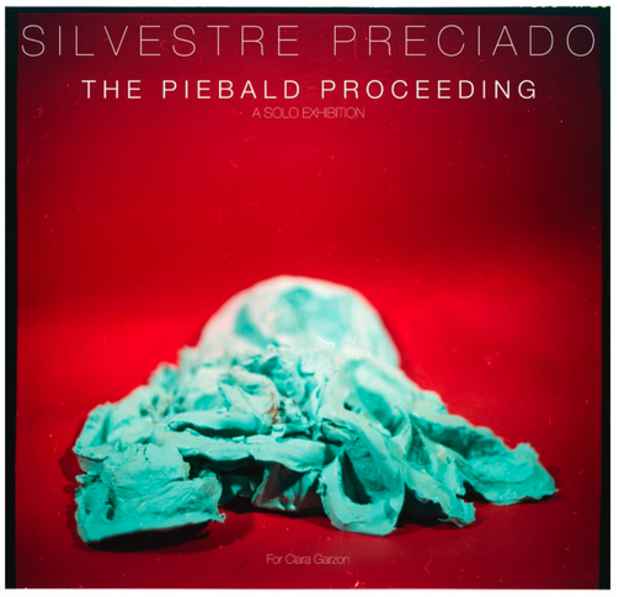Silvestre Preciado "The Piebald Proceeding"
Cooper Union (7 E 7th Street)

This event has ended.
New York based artist, Silvestre Preciado’s, debut solo show and culmination of her work at Cooper Union on April 17th 2012, titled The Piebald Proceeding
Imagine a mug shot being the only output of photography, a camera’s only purpose being to help keep track of societies criminal element. Allan Sekula traces the origins of photography to this utilization. The field of radiological imaging is currently in a similar stage in its evolution. An imaging study taken by a skilled technician is caged within its pre-decided practical function of assisting diagnostic medicine.
Returning from my travels in Asia, I came across an image of a post-mortem lung in a medical dissection manual. I was struck by the fact that I possessed a set of lungs, yet had no personal concept of what they looked like. Not knowing what resides within me was disturbing, and I knew this unsettling feeling required deeper contemplation.
Much like photography once altered the perception of the expression of human form for painters like Georges Braque, I believe new technological advances should also be able to affect the artist’s perception. I looked to radiological imaging to help me achieve this but was confronted by the limits set by medicine’s use for the images.
My interest of wanting to explore the human representation goes beyond the medical compulsion to find and alleviate suffering. The void of representation of humans and their social reality in medical imaging is what has driven my work to bring the real body back to the image. The intention of the work is to utilize art to reunite the radiological image with the intimacy and diversity of humanity.
In The Birth of The Clinic, Foucault argues that at the end of the 18th Century the institution of medicine took the position that it’s current practices were “correct.” It cited inherent practicality derived from a new understanding of medical “reality” facilitated via elimination of dogmatic roadblocks – a cultural disenchantment with the Church’s approach to healing soul instead of the body. Foucault questioned the validity of taking for granted the reality that contextualized medical practice. The practices were not inherently practical. They were just part of yet another system of knowledge that endowed them validity. What doctors began to take as obvious and undeniable only seemed so to the naked eye. With the invention of the microscope, there was a need for a redefinition of the medical gaze to incorporated uncharted spaces within the body.
The radiological image today is also limited by the system of knowledge in which it operates. It fails to live up to it’s full potential, forcing a disconnect between itself and the viewer. Furthermore, a rift is forced between the image and the artist.
The 20 drawings in the show bring the viewer into awareness of the minimalist nature of the radiological images; stripping the image of excess body, bare to its pure formal and informational value. This study prepares the viewer for a post-minimalist reconception of the medical image, depicted in the larger works.
The larger works comment upon the minimal aspects of the nature of radiology, using a post-minimalist application of artistic materials. The organic line, weight, and form allow the discourse to be in the language used for describing the natural body.
Applying Lacan’s principle of “the mirror stage,” the work strips the medical image of medicine’s standards for its utility and permits the viewer to discover a part of the self, thus gaining new autonomy.
The immersion in the radiological image stripped bare prepares the viewer for a transcendental experience – one bridging the disconnect between image and artist, image and viewer, and ultimately between artist and viewer.
Media
Schedule
from April 17, 2012 to April 21, 2012
Opening Reception on 2012-04-17 from 18:00 to 20:00